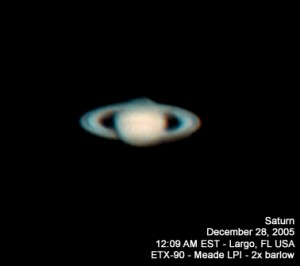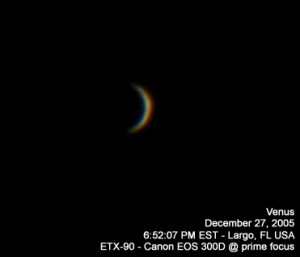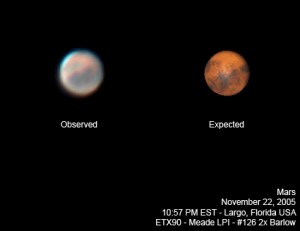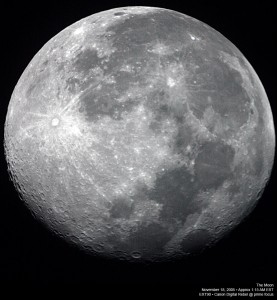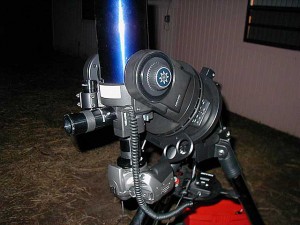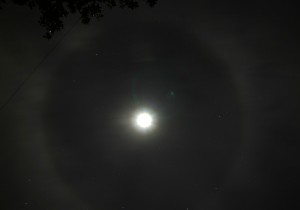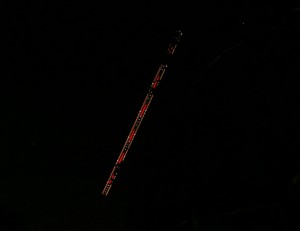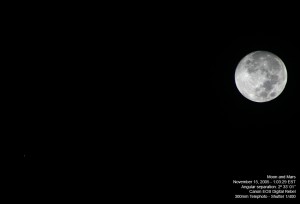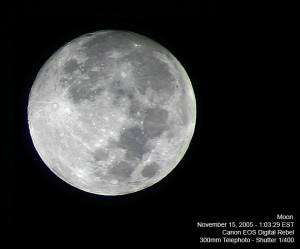Well at long last the sky has cleared up and the haze has lifted. The temperature is 47º F (which is so cold for us here that I’m tempted to express it in Kelvin… but anyway) and I’d say the seeing is about as good as it ever gets.
I took the scope out on Christmas day and pointed it at a distant terrestrial object (a tree) in order to train the drives but clearly I did something wrong. I went out tonight and began the alignment procedure and the telescope asked me to verify it was pointing at Sirius — the first “alignment star” it chose — not even close. Back to the old drawing board I guess. I didn’t need Autostar to find something like Saturn so I set up for imaging anyway. Here is the result of my labor.
Yes, not the prettiest but I consider it practice for the Jan 27th opposition. You can clearly see the Cassini Division and some banding in the atmosphere (South Equatorial Belt). Also you can note the sliver of a shadow the planet is casting on the left hand side of the rings behind it. At the eyepiece there wasn’t as much color as captured here, but there was far more crispness and detail in the ring system. There has got to be a better way to do this.
Earlier in the evening just after sunset, I pulled the scope out in manual mode with the Canon EOS 300D at prime focus. I took a number of shots of Venus at varying exposures, 1/200 sec came out the best which incidentally was the first one I took.
I found that with any longer exposures, shutter-induced vibration blurred the image as the scope (with the camera attached) was sorely out of balance. I need to quit talking about making a counter-weight for this configuration and just do it! I have all the freakin’ parts for crying out loud.
Lastly, for Christmas Santa left me a Canon Angle Finder C, a Canon Timer Remote Controller TC-80N3for me Digital Rebel (300D), and the Orion Deluxe Stargazer’s Filter Set for the telescope. Hopefully I’ll get to give all these items a good workout soon!
I hope everyone is having a safe and happy holiday!
